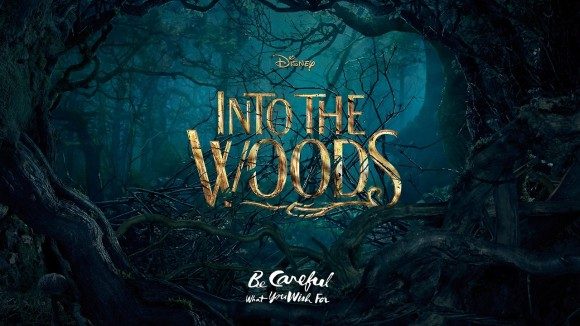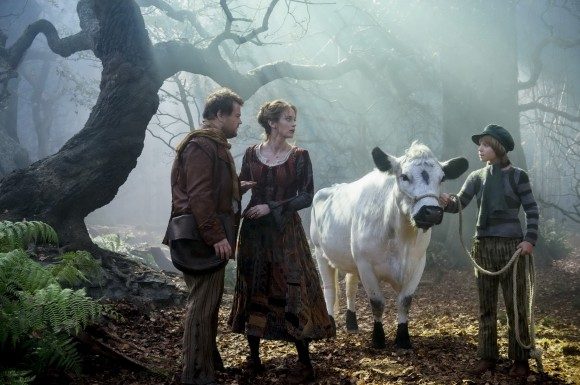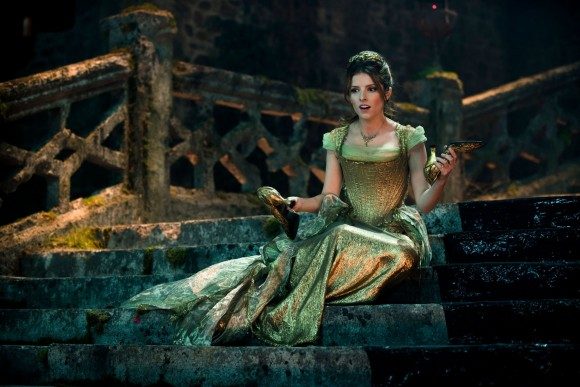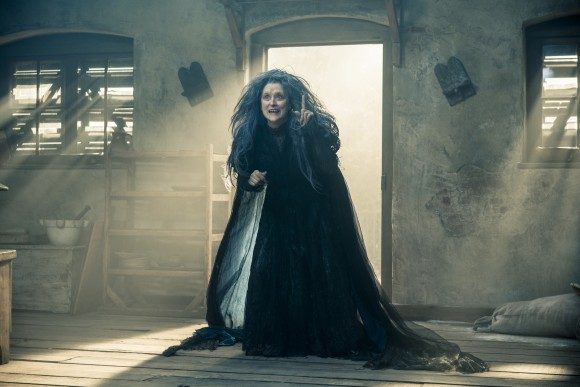The inherent challenge of Rob Marshall’s Into the Woods, based on the massive Broadway hit, is that it’s really several movies wrapped up in a single package. It’s a quest adventure film a-la-Princess Bride or Hook. It’s a dark psychological musical in the vein of Les Miserables or Sondheim’s own Sweeney Todd. It’s part-comedy, then part-tragedy. It’s a Disney film. It’s a children’s film and then, finally, it’s more of a movie about children.
That the film is able to service these various masters as it exists across so many dimensions is a testament to the abilities of its performers, the meticulous planning of its creative architects, and the sparkling quality of its source material. This is a complicated film, one with many plot threads and characters to keep track of, and it’s one of the most challenging children’s films that you’re likely ever to see. It’s also thoroughly engrossing, entertaining, and one of the best screen musicals in years. 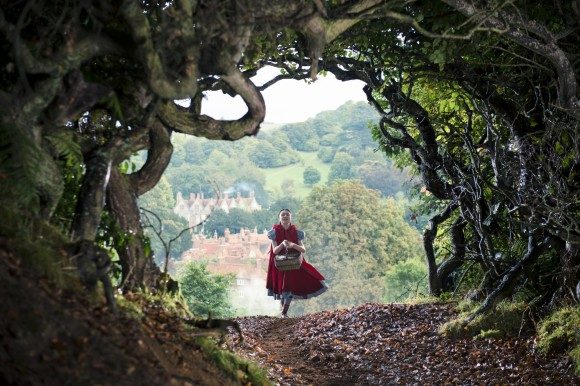

Once upon a time, in a far off kingdom, in a small village at the edge of woods, the most famous of Grimm’s fairy tales came together over the course of several fateful days. Fed up with her stepfamily’s abuse, Cinderella (Anna Kendrick) makes her way the prince’s ball. A young girl in a red cape (Lilla Crawford) takes some baked goods to her granny’s cottage. A dim-witted boy named Jack (Les Miserables’s Daniel Huttlestone) sells his cow for magic beans. And in an original addition to the canon, a baker and his wife (James Corden and Emily Blunt) work to undo a curse placed on them by a vengeful Witch (Meryl Streep). Waiting in the wings are the likes of a charming prince (Chris Pine), a wolf with uncontrollable appetites (Johnny Depp), and the Witch’s adopted daughter Rapunzel (Mackenzie Mauzy).
It’s a lot to take in, but the film’s script (adapted from the source material by original playwright James Lapine) does an astounding job of keeping things moving at a brisk pace. The key is how tightly interwoven the different storylines become in their revised telling and how each tale is made to expand outwards rather than develop in isolation. For example: the Baker, told he can only reverse the curse on his family by acquiring a set of very specific items before three days pass, is the one that gives Jack magic beans in exchange for his cow. While Jack goes on his skyward adventure, the Baker is able to save Little Red Riding Hood from her encounter with the wolf. After that, it’s Jack and Little Red that meet, and their conversation triggers the next plot development for his story, which in turn causes a sorely-needed distraction that allows Cinderella to escape an unwanted confrontation in her storyline, and on it goes. It’s an impressive act of screenwriting juggling, but it comes off beautifully and does a lot to make the complicated proceedings feel like a single rapidly advancing story.
Of course, a lot of this is carried off through the performers, and Into the Woods features one of the strongest ensemble casts of the season. Each of the major players turns in a memorable performance, adroitly navigating the material’s vocal demands and tonal shifts (Into the Woods is the sort of story that delights in shifting from high comedy to sinking pathos at the drop of a hat). Meryl Streep brings her trademark excellence to the production’s showiest role and Anna Kendrick’s star continues to rise with another absorbing performance, but special note must be made of Huttlestone and Crawford. The teen performers both feel like once-in-a-lifetime finds, exuding natural magnetism and holding their own even while standing next to seasoned veterans like Emily Blunt or La Streep herself. The film’s surprise showstopper, however, might well be Chris Pine, who turns the prince into a spectacular combination of arrogance, privilege, and unadulterated ham. Every one of his lines, whether spoken or sung, is hilarious, cringe-worthy, or, at his best moments, hilariously cringe-worthy. 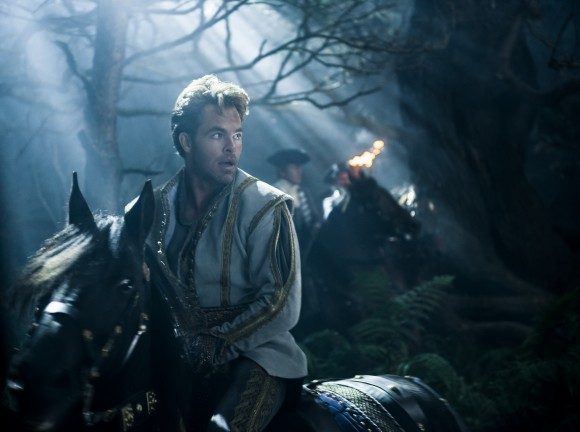

As good as the cast is, though, the real star of the film is the musical score. Composer Stephen Sondheim is legend of the musical theater, and Into the Woods is one of his most accomplished works. Each of the numbers unleashes the virtuoso mastery of musical form and the English language that has become his trademark, and most of them have never sounded as good as they do with the film’s lush 53-piece orchestrations. Even better, the filmmakers don’t rest on the preexisting score’s laurels, coaching the songs in all kinds of creative stagings and visual interpretations of the sort you can’t pull off on a theatrical stage. In one of the film’s most engaging visual moments, Cinderella has a number in which she tries to pick between two choices. As she launches into the number, the world around Kendrick slows down and grinds to a freeze-frame halt, as if the entire song was taking place over the course of a single second of high-speed, neurotic mental activity. Streep is the standout in this department, effortlessly gliding through a range of numbers that go from bua-ha-ha villain song to tear-jerking ballad to rip-roaring finale so earth-shaking that the character literally brings the world down around herself.
Now, if all of this sounds nice but not quite as complicated as my first paragraph would suggest, well, yes. Let’s just put it this way: at a certain point in the film, we get to the end of the traditional fairy tales that we know and the film… keeps going. What happens after that, I cannot in good conscience give away in a review, but suffice to say that is when the film’s darker and more subversive intentions begin to shine through. It is also, sadly, where the film does slip slightly from the lofty heights of its early stages. The compression of time and events, which works so well for the early portions of the story, ends up going a bit too far (the stage show can easily run for three plus hours, and the majority of the material that has been removed to make the film a comparatively breezy 124 minutes comes from the play’s second half). Plot turns and, especially, shifts in characters’ attitudes start to come so fast and furious as to feel jarring and somewhat contrived. The big points the film strives for still hit their mark, but there’s not quite enough room for the emotional homerun the viewers or the filmmakers want.
The Verdict: 4 out of 5
Smart, funny, poignant, and only slightly less dark and twisted than it Broadway originator, Into the Woods is an accomplishment of musical filmmaking. Its performers are top-notch, and its interpretations of classic fairy tales and flawlessly composed songs are a joy to see and hear. It’s just a shame that it’s second half, where the gloves come off and the film’s truly ambitious ideas lie, is held down by scripting and pacing issues that were absent during its early stages. Still, even with its warts, this is an energized adaptation of fantastic material, and one of the bravest and most intelligent films that Disney has ever released.

